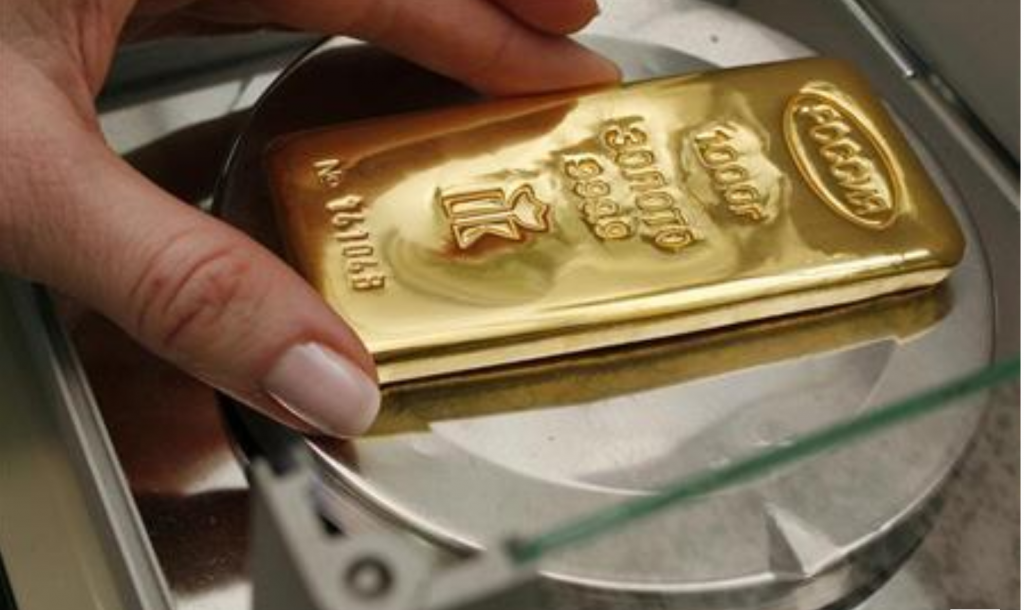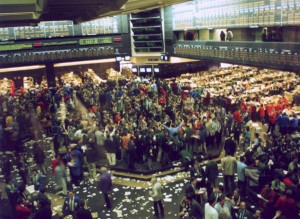A small number of investment professionals around the world are competing behind the scenes to turn the gem into a commodity that would be available to investors in the way that gold has been traded through funds on exchanges.
Trading in diamonds is limited in the United States to the retail market for engagement rings and other jewelry and the back-room bargaining among merchants in places like Manhattan’s diamond district on West 47th Street.
But financial industry players in New York, London, Switzerland and Israel say there is an opening to provide reliable public access for the growing universe of investors who have been willing to sink money into funds backed by exotic assets like palladium and silver. Those players have turned a gold-backed fund, the SPDR Gold Shares, into one of the world’s largest exchange-traded funds, with a market capitalization of about $70 billion.
The Securities and Exchange Commission is reviewing a proposal to create the first diamond-backed exchange-traded fund, which would be available to anyone with an online trading account. It would buy one-carat diamonds and store them in a vault in Antwerp, Belgium, providing daily values with an as-yet-unnamed index. The fund is backed by a New York company, IndexIQ, that has brought 14 other exchange-traded funds to market in the last five years.
In addition, Martin Rapaport, who founded a popular gauge of diamond pricing, said recently that he was preparing to release a “few” products this year that would be available to retail investors. He declined to describe them.
In perhaps the most developed plan, the largest publicly traded diamond company, Harry Winston, is working with a Swiss asset manager to create a $250 million fund that is set to begin buying half-carat to six-carat diamonds this year with money from institutional investors like hedge funds and pensions. The fund would own diamonds bought and sold in Harry Winston stores and sell shares to private investors.
“Diamond is the last uncommoditized commodity, and so it’s drawing in many organizations,” said Edahn Golan, the editor in chief of IDEX Online, a provider of diamond industry data. “I assume that by the end of this year there will be a bunch of them out.”
Investment professionals say that retail investors should be very careful, given the difficulty of establishing consistent prices for diamonds of widely different cuts and quality, and the traditional secrecy of the industry. The diamond market has also been tarnished by accounts of stones mined in war-torn parts of Africa, though both the IndexIQ fund and the Harry Winston fund have committed to avoiding such so-called blood diamonds.
“There would be a huge learning curve for me to be comfortable trading something like this,” said Matt Zeman, a commodity trader at Kingsview Financial.
The diamond industry can only dream of replicating the success of gold companies. Gold investments, rather than jewelry, have become the primary driver of growth in the industry, according to the World Gold Council, pushing annual production to around $100 billion, Citigroup analysts say. By comparison, the annual production of polished diamonds is about $18 billion, Citi said.
The allure of diamonds is that, like gold, they are easily authenticated and long lasting. But unlike gold, and oil, diamonds have not had much price volatility, in part because they have not been touched by large flows of speculative money, though that could change if the new efforts succeed.
“It makes sense that investors would have interest in diamond-backed funds,” said Joung Park, a commodities analyst at Morningstar.
This is not the first rush to bring diamonds to Wall Street. When inflation was soaring in the late 1970s, the search for stable stores of value led to a few legitimate, and many illegitimate, operations that lured retail investors into diamonds. One, started by the financial company Thomson McKinnon, sold shares privately and was wound down when interest rates plummeted, taking the value of diamonds with them.
The market long repelled many investment professionals because of the 80 percent to 90 percent market share of production held by De Beers, the global diamond giant. That began to ebb when De Beers relaxed its grip on the supply channels in 2000, and subsequently sold some of its mines and inventory, reducing its market share to 40 percent today, according to Citi.
“Before De Beers gave up its monopoly, the investment case was pretty difficult,” said Peter Laib, chairman of the Swiss firm Diamond Asset Advisors, which is working with Harry Winston on a diamond fund. “Why would I start a fund where the price is controlled by one company?”
The end of the monopoly still left perhaps the biggest barrier to investment: the lack of uniform standards for diamond pricing. Unlike gold, which is sold for essentially the same price in financial markets around the world, diamonds have been sold mostly through bazaarlike areas like the Manhattan district and the Antwerp Diamond Bourse, which advertises that a “binding handclasp fixes price, delivery and conditions.”
“The diamond industry suffers from an image which sadly is rather well deserved, which is hiding behind smoke and mirrors,” said Charles Wyndham, the London-based founder of Polished Prices, a diamond pricing company.
Many market participants argue that diamonds are not a commodity but unique items that need to be evaluated individually. But Wyndham, Rapaport and IDEX are competing to prove that wrong by creating standardized pricing. IDEX has an hourly updated index of asking prices from its online database, weighted with the 15 most popular varieties.
The IDEX index is not the best gauge, Mr. Wyndham argues, because it relies on asking prices rather than actual transaction prices, as stock exchanges do. He has built the Polished Prices index, which is available on Bloomberg terminals, and uses selling prices the company receives from 20 wholesalers. He said he was working with a “major European financial institution” that is seeking to win regulatory approval in Europe for yet another diamond fund that could be available to the public.
Polished Prices hosted a conference in 2007 with dozens of finance industry professionals who considered how to make diamonds a regulated investment. Mr. Wyndham’s partner, Richard Platt, said he thought then that a product would be available sooner.
“It’s been difficult, but we’re quite a long way down the road to getting there,” Mr. Platt said.
Mr. Wyndham and Mr. Rapaport are critical of the only fund that is available to ordinary investors, the Diamond Circle Capital Fund, which listed on the London Stock Exchange in 2008. It collected roughly $50 million from investors and used it to buy stones, each worth at least a million dollars. Mr. Wyndham said the fund managers did not work out a system for pricing and eventually selling its holdings. Shares have dropped to less than $4.20 this week from around $10 in 2008.
Andrew Dawson, the fund administrator, said it recently underwent a management change and now has a better strategy with the new managers. The fund working with Harry Winston has devised a novel way of dealing with the problem of pricing. The manager in Switzerland will pay for the inventory in Harry Winston stores. The value of the diamonds will be determined after a customer buys a piece of jewelry containing the stones and a replacement stone is purchased through Harry Winston’s supply chain. The fees for the fund will be similar to those of a hedge fund, with a 1.5 percent management fee and 20 percent of any increase in value.
The United States-based fund from IndexIQ advisers did not list its planned fee in the application it filed to the S.E.C. in March. Its other exchange-traded funds have fees around 1 percent annually and trade on the New York Stock Exchange’s Arca exchange. Its biggest fund replicates hedge fund strategies and has attracted $200 million in assets. The S.E.C. does not comment on pending applications.
All the new sponsors make the same argument for what makes diamonds attractive to investors: while the supply of new diamonds is not expected to rise, the demand from India and China is expected to increase steadily. Brian Chen, a mining analyst at Citigroup, said “the fundamentals look so good in terms of supply and demand.”
The Polished Prices index has fallen 2.2 percent this year, but risen 5.6 percent over the last year, and 56 percent since its inception in 2003.
But Ron Rowland, a mutual fund and exchange-traded fund adviser, and the founder of Capital Cities Asset Management, said that even if funds did begin, retail investors should approach with extreme caution.
“Stay away until you know exactly how it works, and can be sure it’s acting like you think it will,” he said. “It’s going to be a difficult market to create.”
By NATHANIEL POPPER/THE NEW YORK TIMES

